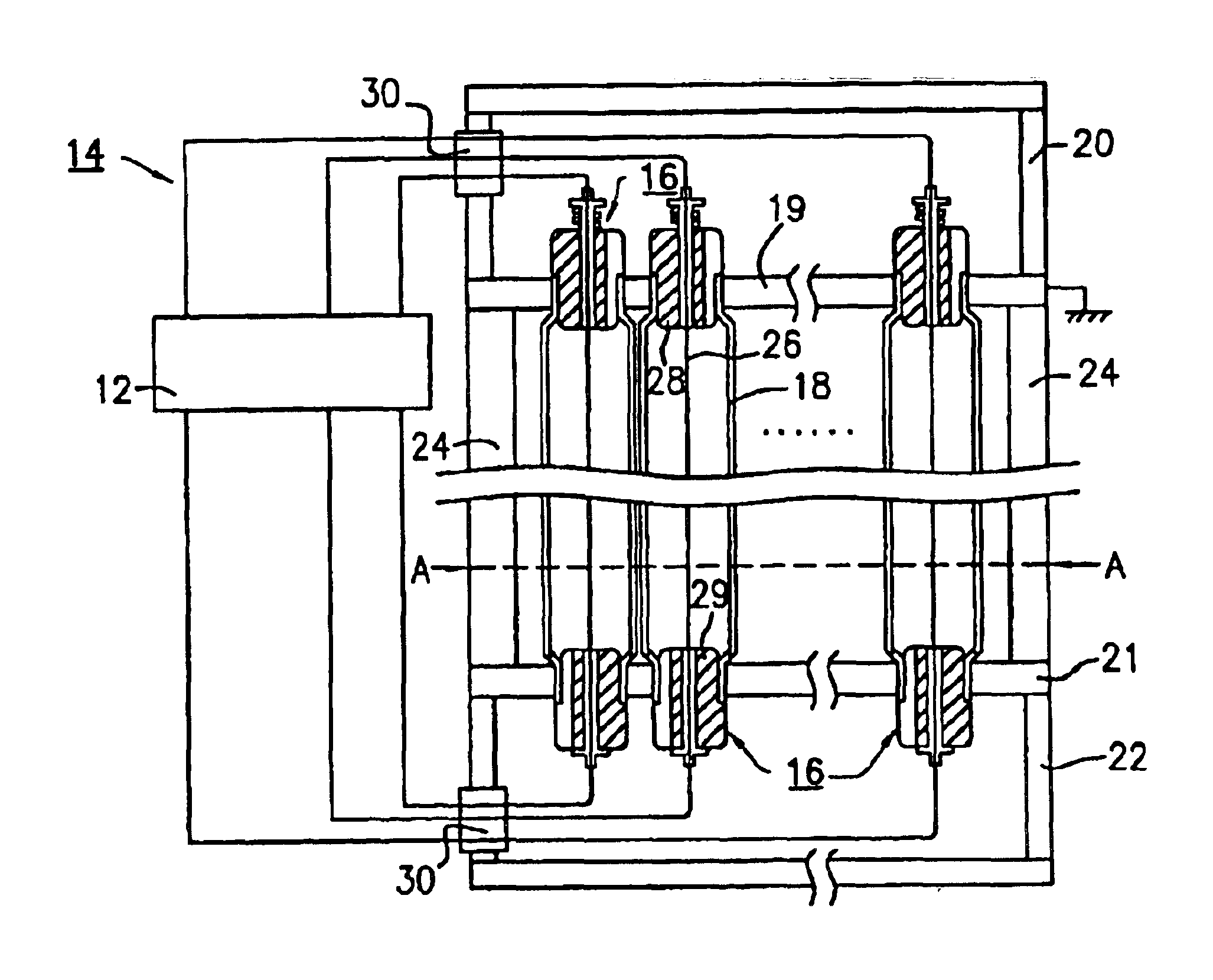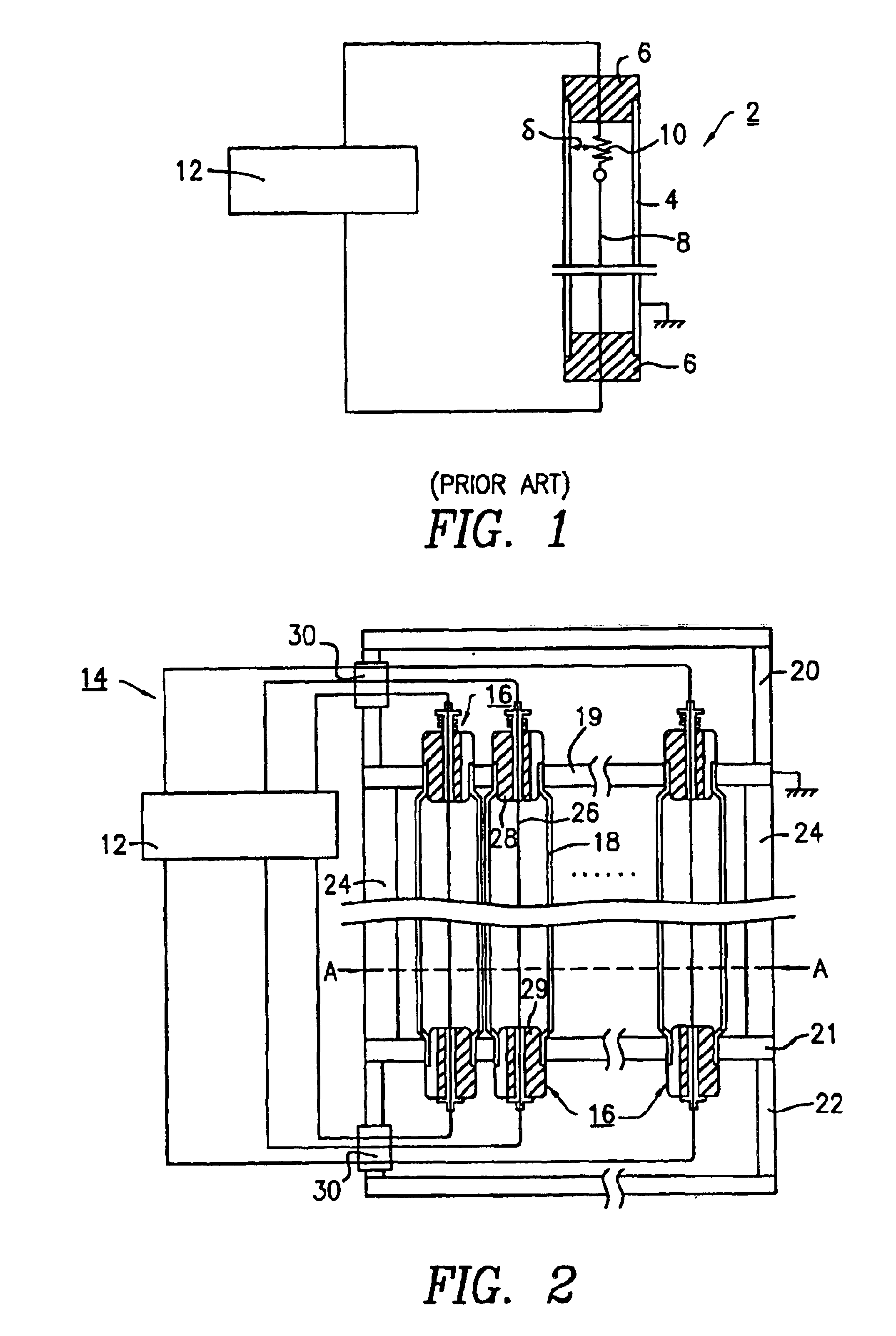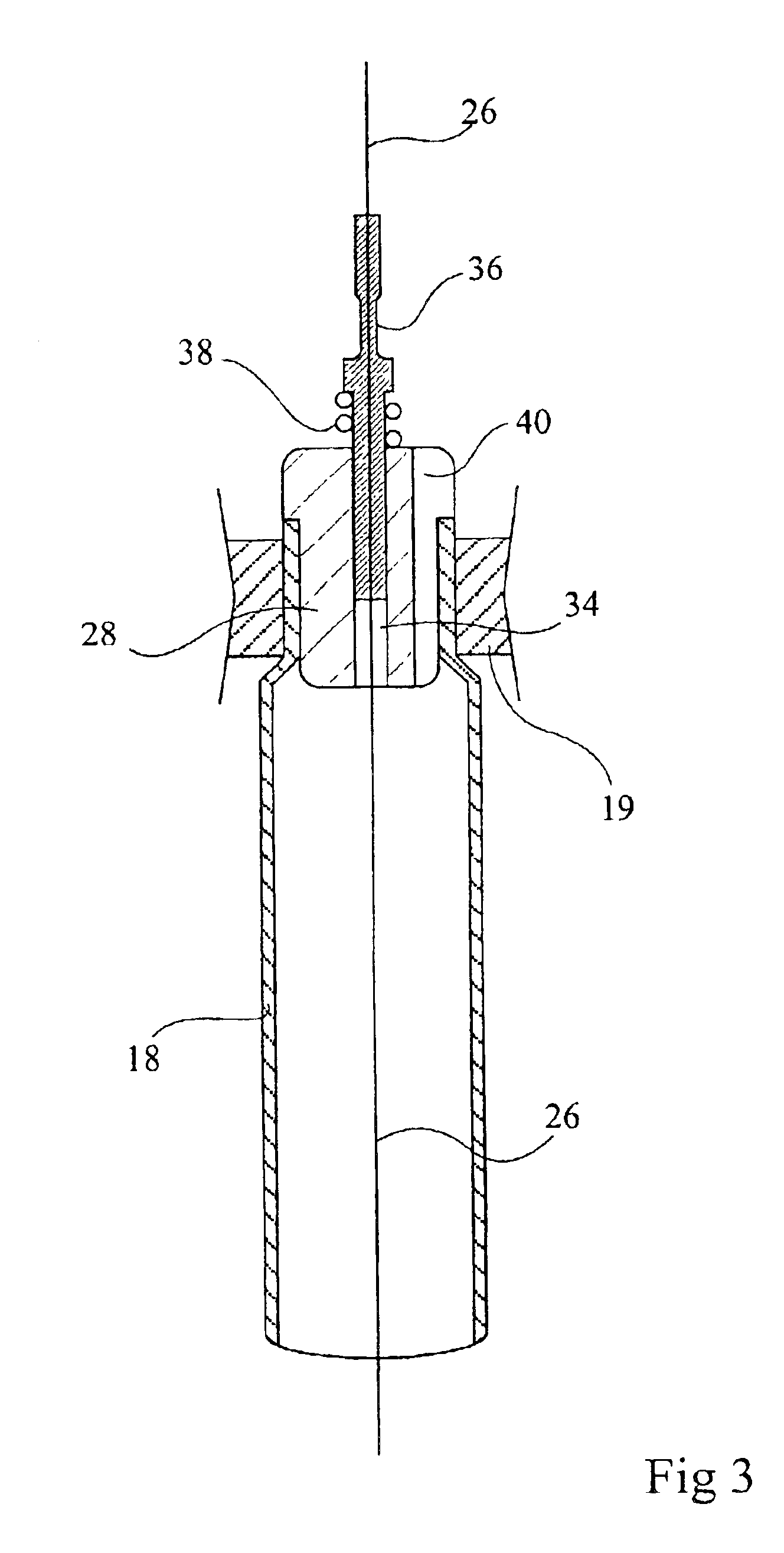Ionizing radiation detector and method for manufacturing such a detector
- Summary
- Abstract
- Description
- Claims
- Application Information
AI Technical Summary
Benefits of technology
Problems solved by technology
Method used
Image
Examples
Embodiment Construction
[0028]FIG. 2 schematically shows a detector 14 according to the present invention, comprising a sensitive surface formed of a juxtaposition of tubular sensitive cells 16. Each sensitive cell 16 comprises a conductive tube 18, a first end of which crosses a metallic wall 19 of a tight enclosure 20 and the second end of which crosses a wall 21 of a tight enclosure 22. The ends of tubes 18 are welded to walls 19 and 21 of enclosures 20 and 22 so that the tubes 18 and the enclosures 20 and 22 can be filled together with a single gas mixture under pressure. The ends of tubes 18 have a diameter smaller than the diameter of the tube bulk. The openings of walls 19 and 21 in which are inserted the ends of two adjacent tubes are distant by an interval equal to the difference between the diameter of the ends of the tubes and the tube bulk diameter. This interval between two adjacent openings enables easy welding of the tube ends to walls 19 and 21. Enclosures 20 and 22, formed in a conductive ...
PUM
 Login to View More
Login to View More Abstract
Description
Claims
Application Information
 Login to View More
Login to View More - R&D
- Intellectual Property
- Life Sciences
- Materials
- Tech Scout
- Unparalleled Data Quality
- Higher Quality Content
- 60% Fewer Hallucinations
Browse by: Latest US Patents, China's latest patents, Technical Efficacy Thesaurus, Application Domain, Technology Topic, Popular Technical Reports.
© 2025 PatSnap. All rights reserved.Legal|Privacy policy|Modern Slavery Act Transparency Statement|Sitemap|About US| Contact US: help@patsnap.com



